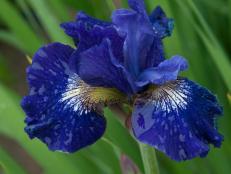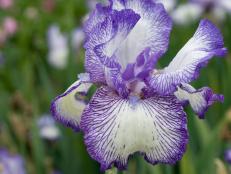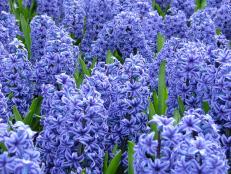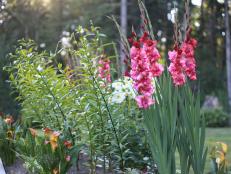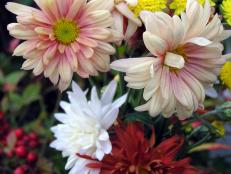Bearded Irises
Grace your garden with the elegant blooms of bearded iris.
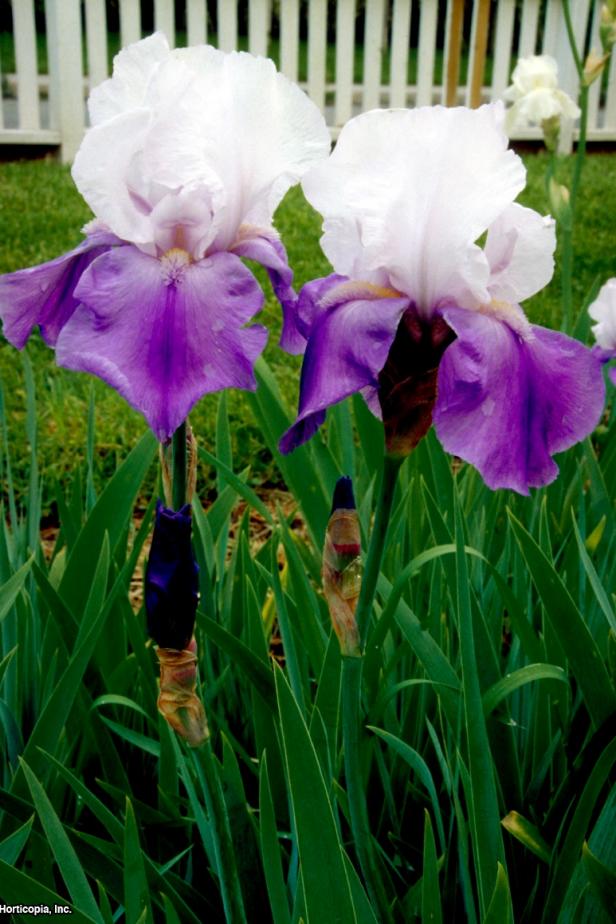
Courtesy of National Gardening Association
Celebrate spring with the beautiful blooms of bearded iris. These perennial favorites start flowering in mid-spring and last until mid-June, depending on the variety. Bearded iris (Iris germanica) are a traditional garden flower for decorating graves on Memorial Day. In the temperate zones of the Midwest and Northeast, these bloomers are usually staging a spectacular show about that time.
Bearded iris open fascinating, intricate flowers. The blossoms have two different set of petals that serve specific purposes. An upright set, which is known as the standards, acts as signal flags to beckon pollinating insects.
A lower set of petals that cascades downward is known as falls. The falls provide a landing pad for pollinating insects. The beard on a bearded iris occurs on the fall petals, and it helps give pollinators a place to grab as they zip in for a landing. Watch bumblebees visit bearded iris blooms, and you’ll witness how they land on the falls, clamber up the beard and scurry into the center of the flower.
The petals of bearded iris can occur in virtually any number of colors, from black, to yellow, to burgundy, to orange. The traditional purple and blue iris flowers seem to be the most common, and they’re the ones you’ll often see at local plant swaps. These old-fashioned types typically have a lovely, light fragrance. Many of the hybrids open perfumed blooms, too.
Plant bearded iris in full sun in soil that drains well. These iris grow from a specialized stem known as a rhizome. It’s fat, fleshy and easily rots, so it’s important to make sure soil drains well. Add compost or composted manure to planting beds to improve drainage. The other key to preventing rhizome rot is not to plant stems too deeply.
When you’re planting iris, dig a hole up to 10 inches deep so roots have ample loose soil to sink into. If your bearded iris rhizome has long roots, create a mound in the planting hole to set the rhizome on and let roots dangle into the planting hole. Position rhizomes so that the top is just even with or slightly higher than the surrounding soil surface.
Bearded iris need a dry period after flowering. This is a time of semi-dormancy, when the plants rest. In this time, it’s important not to water. This semi-dormant state that bearded iris enter in summer makes them a great plant for using in a xeriscape design, especially in regions where spring rains will keep plants watered prior to the flowering window.
These perennials are hardy in Zones 3 to 9 and bring low-maintenance beauty to the garden. The only real upkeep is snipping spent flowering stems and clipping foliage in fall. This helps to prevent pests and diseases from overwintering among the plant debris.







